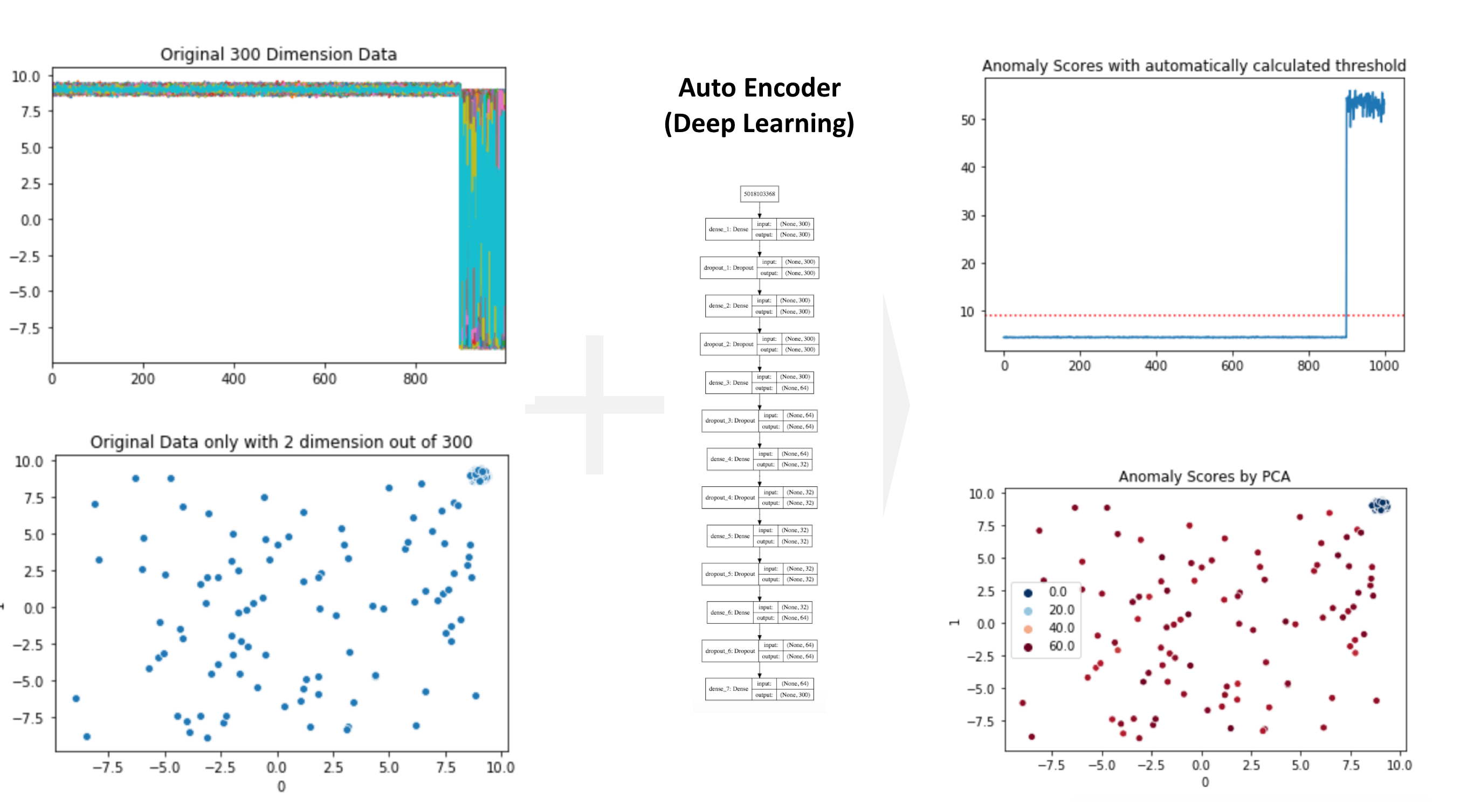How to Develop a 1D Generative Adversarial Network From Scratch in PyTorch (Part 1)
Goal¶
This post is inspired by the blog "Machine Learning Mastery - How to Develop a 1D Generative Adversarial Network From Scratch in Keras" written by Jason Brownlee, PhD. But to learn step-by-step, I will describe the same concept with PyTorch.
This post will cover the followings:
Part 1:
- Select a One-Dimensional Function
- Define a Discriminator Model
Reference
Libraries¶
import pandas as pd
import numpy as np
import matplotlib.pyplot as plt
%matplotlib inline
# PyTorch
import torch
from torch import nn
from torch import optim
from torchviz import make_dot
Create a target 1-D function¶
def f(x):
return x **2
n = 100
sigma = 10
x = sigma * (np.random.random(size=n) - 0.5)
plt.plot(x, f(x), '.');
plt.title('Target function $f(x)$');
plt.xlabel('randomly sampled x');
plt.ylabel('$f(x)$');
Define a Discriminator Model¶
The definition of a discriminator model is that it will classify the input data into real or fake
# Build a feed-forward network
model = nn.Sequential(nn.Linear(2, 25),
nn.ReLU(),
nn.Sigmoid()
)
# Loss
criterion = nn.CrossEntropyLoss()
# Optimizer
optimizer = optim.Adam(model.parameters(), lr=0.001)
# Visualize this neural network
x = torch.zeros(0, 2, dtype=torch.float, requires_grad=False)
out = model(x)
make_dot(out)
Create real and fake samples¶
def generate_samples(size=100, label='real'):
"""Generate samples with real or fake label
"""
x = np.random.randn(size, 1)
x2 = f(x)
y = np.ones((size, 1)) * (label == 'real')
return np.hstack([x, x2]), y
X, y = generate_samples()
x[:5]
y[:5]





